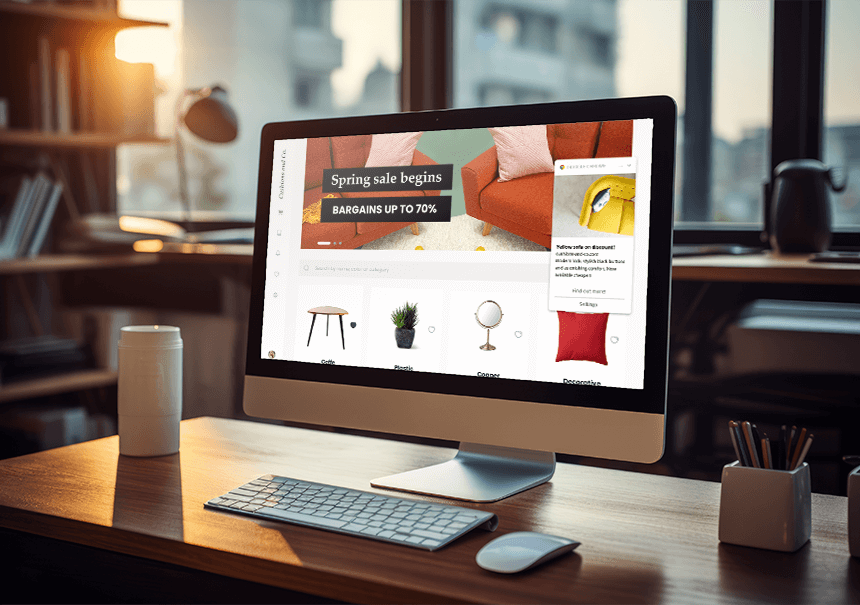RFM reports – what are they, how to use them in marketing?

Effective customer relationship management is a key element of success. Companies are increasingly using advanced analytical tools that allow them to better understand the behavior of their customers. One of the most effective instruments is RFM analysis.
In this article, we will take a closer look at RFM analysis, show its key advantages and find out what benefits it can bring to an enterprise. We will discover why more and more companies decide to implement this methodology into their customer management strategies, as well as what are the best practices when creating RFM reports. RFM analysis is not only a tool for understanding the current situation, but also a key element in creating effective strategies that increase customer loyalty and generate an increase in profits.
What does RFM mean?
A marketing method known as RFM segmentation evaluates and categorizes each customer based on three important criteria:
Recency – time since last purchase. It allows you to divide customers into new (who have made a purchase in recent days), regular (have not purchased for some time) and inactive (have not been seen in your store for a long time).
Customers who have recently made a purchase are likely to be willing to do so again because they have a fresh, positive experience with your brand.
Frequency – a measure of purchase frequency. You can divide buyers into regular (they buy often and willingly), regular (they shop at relatively regular intervals) and occasional (they buy rarely and irregularly).
Of course, communication to individual customer groups will differ. If you have premium products that cost a lot, it is better to target occasional customers who, although they shop rarely, are more willing to take advantage of unusual opportunities. However, regular customers will be better served by weekly offers, because they are most interested in this form of shopping.
Monetary – that is, simply how much money a customer leaves in your store. You can divide buyers into those who are interested in lower value products, those who are in the middle range and those who are willing to spend more money.
Naturally, it is best to offer promotional offers for lower-priced products to thrifty customers, and similarly – to show premium customers exclusive offers combined with bonuses that will emphasize their high value for your company.
A high RFM value is a signal that the customer is strongly associated with your brand. He actively buys in your store, takes advantage of the promotions offered, and is ready for regular cooperation. It is worth maintaining constant communication with such a consumer.
Encourage sharing opinions and feedback, which can help build bonds and trust. Try to create content that engages emotions and allows customers to identify with your brand. Creating a human and authentic tone in your communications will help you build lasting relationships with your customers, making them feel more valued and connected to your business.
Low RFM customers show limited interest in your brand. These are people who have made one or two purchases, but are not inclined to make regular transactions. Additionally, these types of customers rarely respond to news and ongoing promotions, except when a significant discount is offered. However, it is worth carefully planning activities related to granting discounts. If only a few days have passed since your last purchase, which means your R-score is high and the rest of your R-scores are low, it’s suggested to offer a relatively small discount. However, in the case of a decreasing R-number, an effective approach may be to offer a larger discount, which may encourage the customer to buy again. It is important to precisely adapt the offer to the customer’s current situation in order to effectively motivate him to make another transaction.
Why use RFM reports?
RFM analysis is one of the most accessible methods of assessing customer value and segmenting them according to key criteria. Analyzing basic information about customers allows not only to predict their further actions, but also to effectively motivate repeat purchases. When planning a communication strategy, it is worth taking into account several proven relationships:
- A customer who has recently made a purchase and is satisfied with the store’s services is likely to return quickly to make further transactions.
- A customer who purchases regularly tends to maintain this behavior in the future.
- A customer who invests in higher value purchases is likely to continue this type of transaction in the future.
Understanding these relationships allows you to tailor communication to each customer, which results in increased sales effectiveness. Without precise analysis of user data, it is difficult to determine what the profile of a given customer is and what form of communication to use to maximize results. That is why RFM analysis becomes a key tool in creating personalized communication strategies that enable effective customer engagement and building lasting relationships with them.
RFM reports in iPresso
RFM reports in iPresso are a key analytical tool that enables effective analysis of customer data and management of relationships with them. RFM stands for Recency, Frequency and Monetary, three key elements of customer data analysis.
Recency analysis focuses on the time since the customer’s last purchase, allowing you to identify active and interested customers. Frequency measures the frequency of purchases, which allows you to recognize loyal customers who regularly use the offer. Monetary analysis, on the other hand, assesses the monetary value a customer has spent on products, which helps identify key customers who bring the most profits to the company.
The segmentation functionality in iPresso allows you not only to analyze data, but also to immediately segment individual customer groups, which allows you to effectively create Marketing Automation scenarios and deliver appropriate messages to them.
Based on Recency analysis, you can adjust the offer to the most active customers and stimulate people who have not bought anything for a long time to take action.
Frequency analysis allows you to identify regular customers, which can be the basis for effective creation of loyalty programs.
By analyzing monetary value, you can focus on the highest value customers, increasing the effectiveness of your campaigns and generating higher profits.
The ability to focus on attracting new customers with the potential to become loyal, which allows you to avoid dispersion into segments with less potential.
RFM reports allow you to track the effectiveness of your marketing activities and adjust your communication strategy in real time.
RFM reports in iPresso work by classifying customers who make purchases from the company. Contact classification is set by default, but the user can freely change the names and number of customer sets. Reports automatically refresh once a day, ensuring the most up-to-date data is provided.
The industries that can benefit from RFM Reports in iPresso include: e-commerce, where they can be used to personalize shopping experiences and optimize marketing activities; FMCG, where they enable monitoring shopping habits, customizing offers and building loyalty programs; and the financial sector, where they support the analysis of customer behavior, the identification of potential customers for new products and the monitoring of transaction activity.
RFM reports in iPresso are a flexible tool that can be adapted to various industries and businesses to increase the effectiveness of marketing campaigns, manage customers and generate more revenue.
Summary
Using RFM reports, such as those available in iPresso, brings numerous benefits to companies operating in various industries. These reports enable in-depth analysis of customer data, customer segmentation based on key criteria (Recency, Frequency, Monetary), and adaptation of the marketing strategy to various customer groups. Thanks to Recency analysis, it is possible to personalize offers for the most active customers, which increases the effectiveness of communication. RFM reports also enable the optimization of loyalty programs, effective targeting based on customer value and monitoring the effectiveness of marketing activities. This tool is universal and flexible and can be adapted to various industries, which makes it an important element of the marketing strategy, helping companies focus on customers with the greatest potential and deliver them personalized and effective messages.



